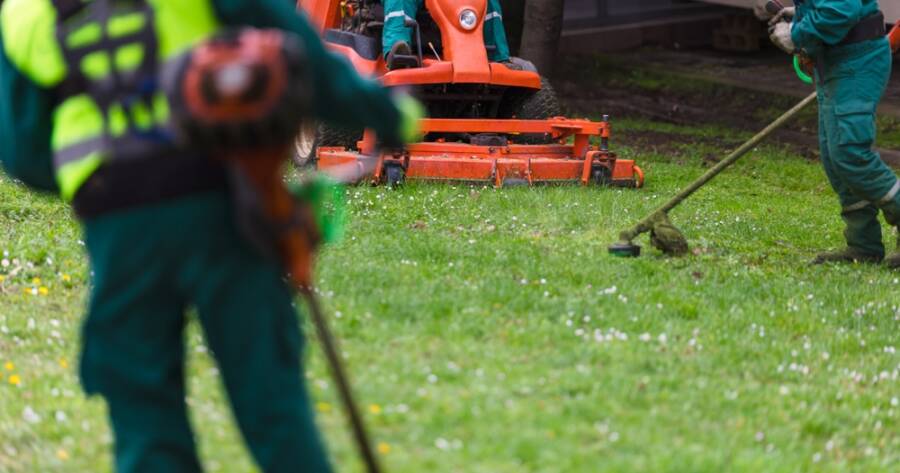When it comes to landscaping your yard, knowing which tasks to tackle yourself and which to outsource can save time, money, and frustration. DIY landscaping can be deeply rewarding, but not all projects are created equal. Some jobs require specific tools, technical knowledge, or labor intensity that makes hiring professionals a smarter move. Strike the right balance between weekend warrior and hiring expert help.
DIY Landscaping Projects: What You Can Do Yourself
Many landscaping tasks are well within the reach of the average homeowner, especially if you enjoy working outdoors and are looking to save money. These projects are typically low-risk, manageable in scale, and offer a great sense of accomplishment.
1. Planting Flowers, Shrubs, and Small Trees
Planting is an ideal entry-level task. With a little research into sun exposure, soil quality, and plant spacing, you can create colorful flowerbeds or a thriving vegetable garden. For shrubs and small trees, ensure you understand the mature size and growth habits before planting. Digging holes, adding compost, and watering thoroughly are straightforward tasks for most homeowners.
2. Mulching and Weed Control
Spreading mulch helps retain soil moisture, suppress weeds, and give your landscape a polished look. Mulching is labor-intensive but doesn’t require professional skills. Similarly, applying weed barrier fabric or hand-pulling weeds can be done regularly without outside help.
3. Edging and Basic Lawn Maintenance
Trimming lawn edges, mowing, and seasonal fertilizing are classic DIY responsibilities. With access to the right tools—a mower, edger, and a basic understanding of lawn care—you can maintain a neat and healthy yard. Aerating and overseeding are also possible DIY tasks with rented equipment.
4. Installing Garden Borders or Simple Pathways
Laying stone or brick borders around flowerbeds or creating a small gravel path are manageable weekend projects. They enhance both appearance and structure with relatively low cost and risk. Online tutorials and kits make these projects more accessible than ever.
5. Container Gardening and Raised Beds
If your yard has poor soil or limited space, raised beds and container gardens offer control and convenience. These structures are easy to build or purchase pre-made, allowing you to grow herbs, veggies, or flowers with minimal effort.
Projects That Require Professional Help
While DIY can be tempting, some landscaping jobs are better handled by professionals. These tasks often require specialized equipment, experience, permits, or pose safety risks.
1. Tree Removal and Large Tree Trimming
Large trees can weigh several tons and removing them is inherently dangerous. Even pruning high limbs carries risk of injury or property damage. Certified arborists have the tools and knowledge to remove or trim trees safely and effectively.
2. Irrigation System Installation
An automatic irrigation system ensures consistent watering, but installing one involves precise measurements, trenching, plumbing knowledge, and often permits. Mistakes can lead to water waste or system failure. Hiring a professional can ensure your system is efficient and code-compliant.
3. Retaining Walls and Structural Hardscaping
Retaining walls, patios, and other hardscaping projects affect drainage, stability, and long-term integrity. Poorly built structures can collapse or lead to erosion. Professionals understand grading, base preparation, and load-bearing calculations that are essential for durability and safety.
4. Landscape Design and Permitting
If you’re making major changes to your yard—such as transforming a slope into a tiered garden, designing a poolscape, or adding lighting—a professional landscape designer can create a cohesive plan. Designers often coordinate with engineers and city officials for permitting, grading, and inspection requirements.
5. Sod Installation or Major Lawn Renovation
Laying sod might sound simple, but large-scale lawn installation involves soil prep, grading, and timing. Professionals can ensure the right type of sod is chosen, installed correctly, and well-irrigated. The result is often healthier and longer-lasting.
When to Blend DIY and Professional Work
In many cases, a hybrid approach offers the best of both worlds. For example, you might hire a pro to build a patio, then handle planting and mulching yourself. Or, a landscape designer could provide a master plan that you implement in phases at your own pace.
If budget is a concern, you might pay for the most complex components and reserve simpler tasks for yourself. This allows you to invest in professional quality where it matters most while still enjoying the satisfaction of personal involvement.
Get To Work
Landscaping your yard can be both personally fulfilling and financially smart when approached with care. Choose DIY tasks that match your skill level and time commitment, but don’t hesitate to call in the pros for technical or risky projects. By combining your enthusiasm with expert help, you can create an outdoor space that’s beautiful, functional, and built to last.

